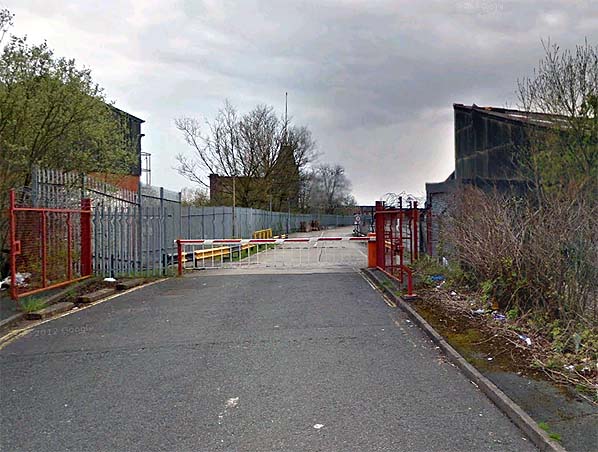|
Notes: Daubhill station was situated on the Bolton & Leigh Railway (B&LR) which was authorised on 31 March 1825 and opened from Bolton to Chequerbent on 28 August 1828. The line was one of Britain’s early railways opening only three years after the Stockton & Darlington and two years before the Liverpool & Manchester (L&M). The line was engineered by George Stephenson, and it was one of his locomotives, the ‘Lancashire Witch’ that made the official inaugural run. The B&LR was originally promoted as a means of carrying goods between the Manchester, Bolton & Bury Canal at Bolton and the Leeds & Liverpool Canal at Leigh (the latter being reached by March 1830). Of particularly importance was the movement of cotton and coal to the mills at Bolton via the Leeds and Liverpool Canal. The line had two steep rope-worked inclines, one at Daubhill and the other at Chequerbent.
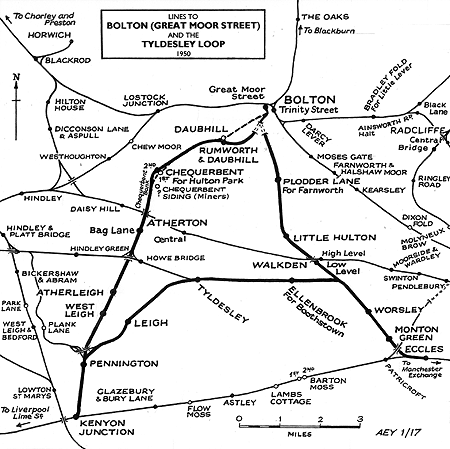 Work had begun on the L&M railway in 1826, and to create a link between it and the B&LR the Kenyon & Leigh Junction Railway (K&LJR) was formed on 14 May 1829. The K&LJR line opened from Leigh to Kenyon Junction on the L&M for goods services on 3 January 1831. Work had begun on the L&M railway in 1826, and to create a link between it and the B&LR the Kenyon & Leigh Junction Railway (K&LJR) was formed on 14 May 1829. The K&LJR line opened from Leigh to Kenyon Junction on the L&M for goods services on 3 January 1831.
The B&LR and K&LJR companies contracted the operation of their lines to John Hargreaves of Bolton. Goods wagons were operated from the line onto the L&M to both Liverpool and Manchester. Hargreaves hauled them only to and from Kenyon Junction, L&M locomotives being used on that company’s line. Although intended to be a freight railway passenger services were introduced when connection was made with the L&M. The first passenger service was an excursion from Bolton to Newton for a horse racing event. Regular passenger services began on 13 June 1831.
In the early days scheduled services were run over the line to Kenyon Junction where passengers could change trains for onward travel to Liverpool, Manchester, Warrington or Wigan. Through tickets to these destinations were sold. It is likely that these trains stopped at a number of locations along the line between Bolton and Kenyon and one of those places may have been Daubhill. There is no reference however to a station until 1846 when Daubhill station appears in the Huish list: this was a list of London & North Western Railway (LNWR) stations and their passenger revenues prepared by Captain Mark Huish for the Roads and Traffic Committee. The LNWR had taken over the line on 16 July 1846: it had been taken over by the Grand Junction Railway on 8 August 1845. (That company also took over the L&M on the same day.) It is likely that Daubhill station had been open since before 1846 and probably since the 1830s.
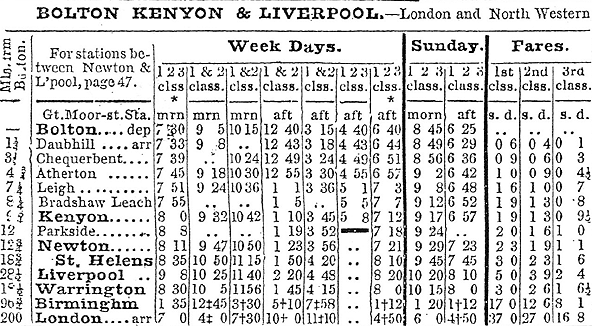
There are no known photographs of Daubhill station, but there is a sketch drawing from the 1880s that shows Daubhill from an elevated position, and the station can clearly be seen. It was located on the east side of Barrier Street over which the line passed on a brick arch bridge. Immediately to the east of the station was the bottom of the rope-worked inclined plane. The B&LR was a single-track railway but there was a passing loop at Daubhill station, so it was provided with two platforms. There were two single-storey buildings at the station that faced each other, one on the up and one on the down platform. The March 1850 timetable showed the station as having six up and six down trains on Monday-to-Saturday as seen in the table below. There were two trains in each direction on Sundays.
Up Trains March 1850 |
Destination |
Down Trains March 1850 |
Destination |
7.33am |
Kenyon Junction (1st, 2nd and 3rd class through connection to Liverpool) |
8.40am |
Bolton Great Moor Street |
9.08am |
Kenyon Junction (1st and 2nd Class only through connection to Liverpool) |
11.15am |
Bolton Great Moor Street |
12.43pm |
Kenyon Junction (1st and 2nd Class only through connection to Liverpool) |
2.00pm |
Bolton Great Moor Street |
3.18pm |
Kenyon Junction (1st and 2nd Class only through connection to Liverpool) |
4.30pm |
Bolton Great Moor Street |
4.43pm |
Kenyon Junction |
5.31pm |
Bolton Great Moor Street |
6.44pm |
Kenyon Junction (1st, 2nd and 3rd class through connection to Liverpool) |
8.10pm |
Bolton Great Moor Street |
Although locomotives had been able to run up the two previously rope-worked inclines on the line since the 1840s they still presented a formidable obstacle. The LNWR decided to create a deviation to the south of Daubhill that would be on an easier gradient; they did the same at Chequerbent. The new line opened on 2 February 1885 and Daubhill station was closed. A replacement opened on the new line called Rumworth & Daubhill. The original line remained open at Daubhill from the base of the inclined plane in the east to a junction with the new line in the west. The line was retained for goods trains that served local factories, and it survived until the 11 May 1964.
The site of the station and the line was lost under an industrial estate roadway.
Route map by Alan Young
* Huish List is a list of LNWR passenger stations and their
passenger revenues prepared by Captain Mark Huish by order of
the Roads & Traffic Committee.
Sources:
- Bradshaw Timetable March 1850.
- British Railway Companies, C Awdry, Guild Publishing 1990.
- Liverpool & Manchester Railway Operations 1831 - 1845, T J Donaghy, David & Charles 1972.
To see the other
stations on the Bolton Great Moor Street - Kenyon Junction line
click on the station name: Kenyon
Junction, Pennington,
West Leigh, Atherleigh,
Atherton Bag Lane,
Chequerbent 1st,
Chequerbent 2nd,
Rumworth
& Daubhill & Bolton
Great Moor Street
|

old4.jpg)
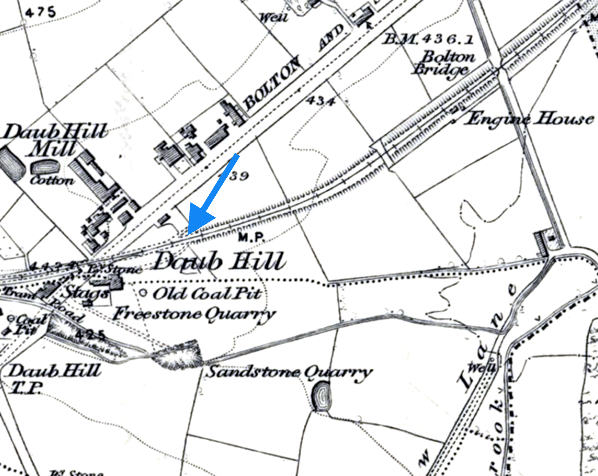
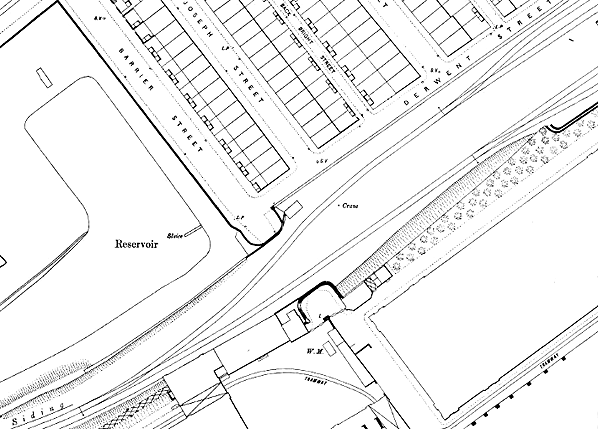
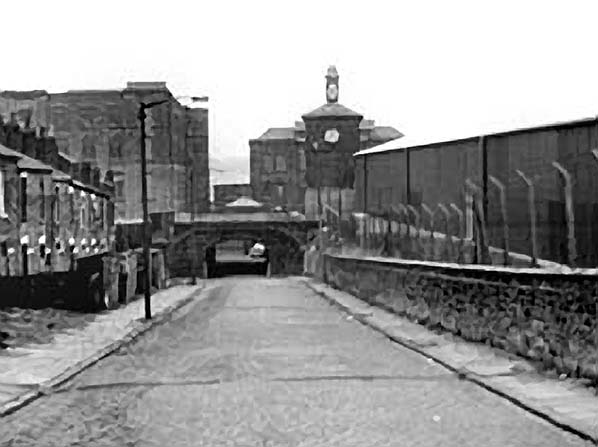
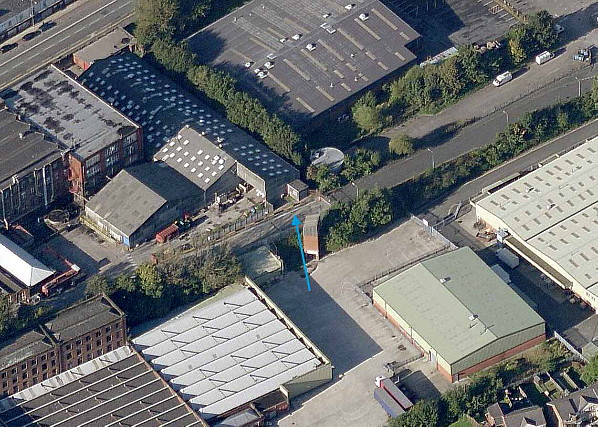
 Home
Page
Home
Page
 Work had begun on the L&M railway in 1826, and to create a link between it and the B&LR the Kenyon & Leigh Junction Railway (K&LJR) was formed on 14 May 1829. The K&LJR line opened from Leigh to Kenyon Junction on the L&M for goods services on 3 January 1831.
Work had begun on the L&M railway in 1826, and to create a link between it and the B&LR the Kenyon & Leigh Junction Railway (K&LJR) was formed on 14 May 1829. The K&LJR line opened from Leigh to Kenyon Junction on the L&M for goods services on 3 January 1831. 
